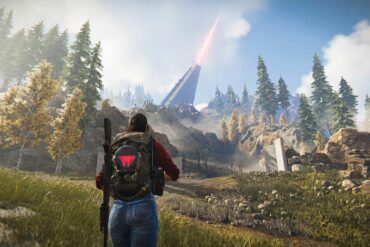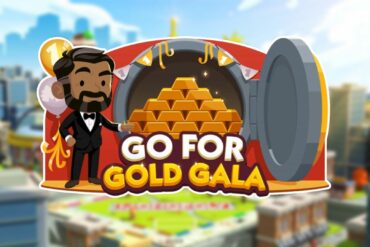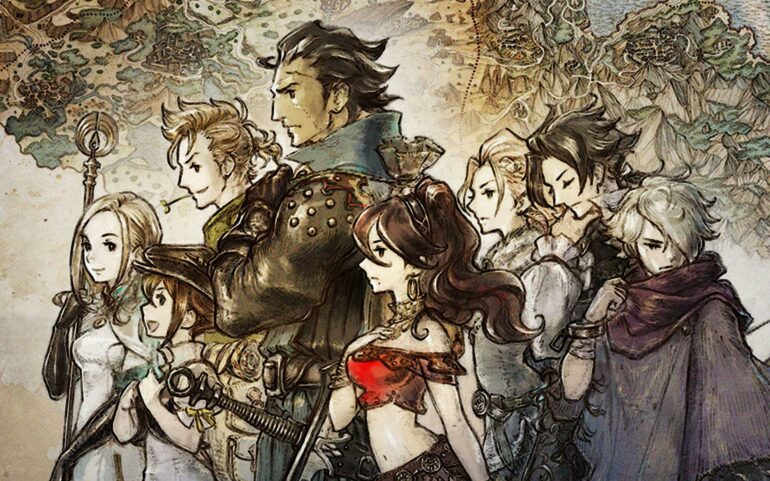For a lot of the early adopters of the Nintendo Switch, Breath of the Wild was the game that sold them on the console. And that is perfectly reasonable. Zelda is one of Nintendo’s most beloved franchises, and Breath of the Wild was built as the biggest, most open Zelda game ever. For a lot of people, Zelda is a great reason to get Nintendo’s newest console. I, however, was not one of those people.
Don’t get me wrong, I love Zelda, and I thought Breath of the Wild looked amazing. But at that point, I had been working on my vintage game collection. Heck, I had just gotten a Gamecube when Nintendo officially announced the Switch. There was a gigantic list of games I wanted to track down and check out already, so why would I want to add new games to the list?
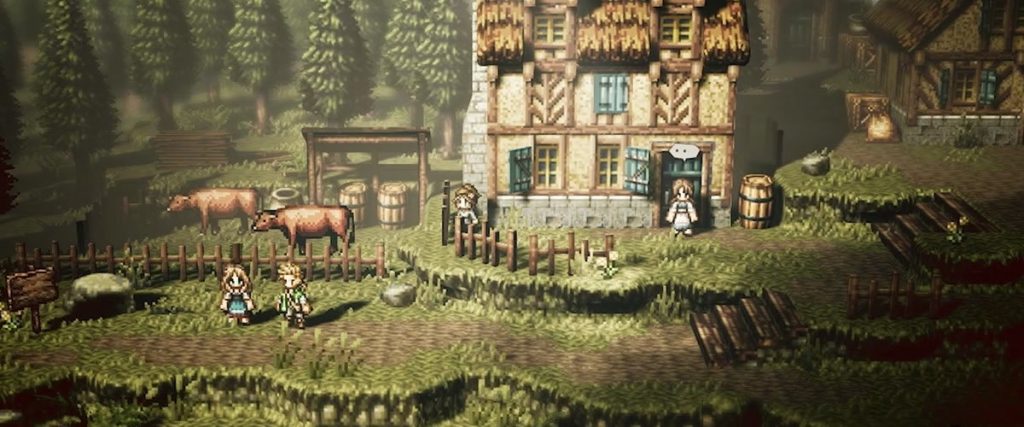
That all changed when I saw the early trailers for Octopath Traveler. A JRPG by SquareEnix that is inspired by Final Fantasy 6 and focuses on specific character story arcs? I definitely needed that. And since it was initially a Switch exclusive, well, obviously I needed a Switch for it. It not only was the reason I got a Switch, but I think it was the first game I ever preordered. I love the game, and I’m not the only one. Much to SquareEnix’s surprise, the game wound up being a big hit, selling over two million copies. Shortly after release, physical copies of the game were almost impossible to find.
With how well the game did, SquareEnix has stated they are working on a sequel. Although, they have said it won’t be released for a long time. But with how great the first game is, what could they do to make a sequel to Octopath Traveler even better?
More Interaction Between The Stories
As much as I love Octopath Traveler, there is one major complaint that I have, and it’s one that is almost universal: the characters don’t really interact within the context of their own stories. The way the game is set up, you are journeying around the land of Orsterra, with eight different characters. Each character has their own independent story, which can be completed in pretty much any order. You don’t even necessarily have to recruit all of the characters in order to go through the game. While there is a final, closing quest and boss fight that ties together the greater plots of all these tales, there is effectively eight different mini-stories going on in the game.
The good thing about this is that it gives each character a time to shine in the game. None of the eight party members are the main character, because all of them are the main character. The whole game is about how each of them grows and learns in the face of adversity.
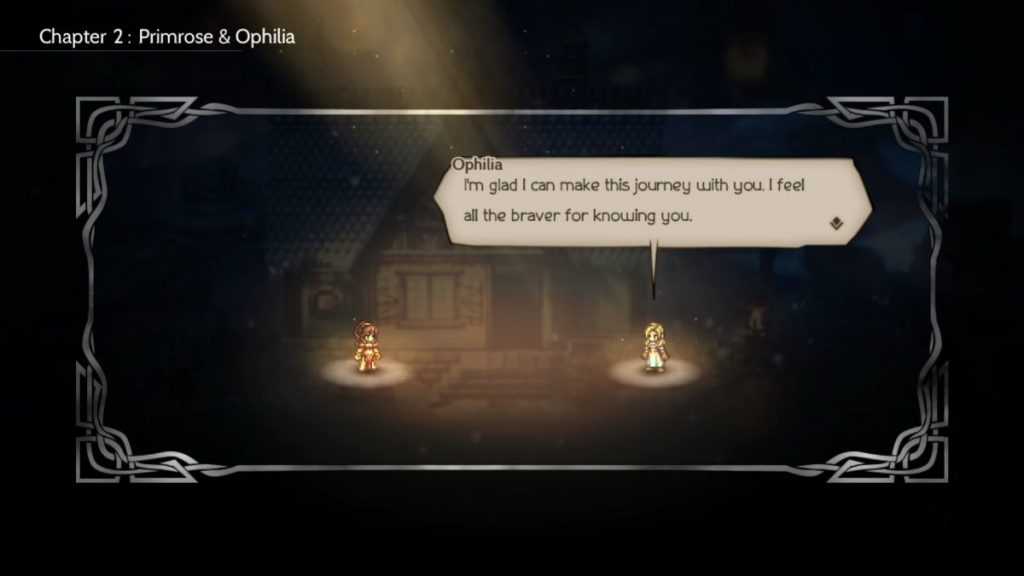
The problem arises when you get to elements of each character’s story, and the cutscenes and plot talk about them being all alone, despite having an entire adventuring party with them. Imagine your chosen character showing up to the big boss fight of the chapter, taunting them for daring to come to the fight alone, despite three other characters being around. It’s a little jarring. While the game does have some dialogue options that show the other party members are around during each chapter, each character’s story is effectively segregated from the others, despite the characters clearly being present, and that is something that I feel takes away from the game experience. While granted, it does lend itself to doing solo character runs.
Likewise, because the game is eight different stories going on simultaneously, it doesn’t feel as cohesive as some other JRPGs could be. The party members team up to help each other just because. Again, while it does great things in terms of allowing each character a time to shine and develop, it does make things feel a little disjointed.
Ultimately, the way I feel like to improve upon this would be a more developed, overarching story connecting the individual character plot threads. Keep the focus on each character’s story, but have more connecting each character’s story. Likewise, during cutscenes, acknowledge that the other characters actually exist. They did a great job focusing on the characters for their first outing, let’s see them make a unified story out of these disparate threads now.
More Characters
While we’re on the subject of characters, how about having some more of them? “But Jared, it’s called Octopath Traveler! EIGHT paths, for eight characters.” Hear me out. As I said above, the big focus of Octopath Traveler is the focus on character arcs. And this is great. I absolutely love it. All of the characters are fun, their stories are enjoyable, and it makes for a fantastic gaming experience.
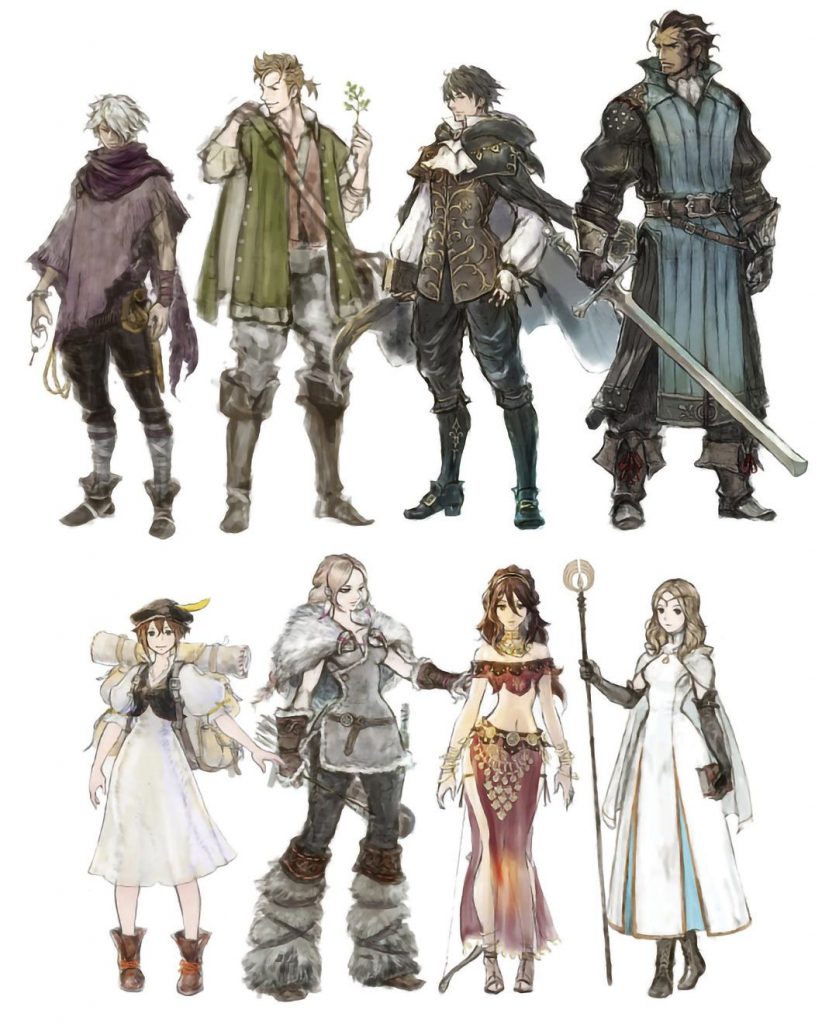
And, yes, I am aware that more characters in a game is not always better. That’s one of the big flaws of Chrono Cross, the incredibly divisive sequel to Chrono Trigger; it had a whole pile of characters, many of whom were not terribly useful to the party, and most of whom did not get a whole lot of development. Basically, they just took up space, and existed. That’s certainly not what I’m advocating.
However, were I in charge of making the sequel Octopath, I would include more characters. It wouldn’t necessarily have to be a bunch. But I’d also have it so that the maximum total party size is still capped at eight. This way, the players would have to make choices about which characters to recruit and which to leave behind. This could have an impact on the way the story plays out and how relationships develop.
If we want to be really ambitious in our dreams and desires, I’d say make some of the characters mutually exclusive, and have some of the stories tie in with each other. For example, you go into a town where there is some sort of conflict going on. There are two recruitable characters, on opposite sides of the conflict. You are only able to get one. Which do you pick? While both options are valid, and both will get you a party member, it has a ripple on what happens through the rest of the game. Heck, even having the opposing character be a recurring villain for the one you recruit would be really cool. Not only would this expand the storyline of the game and add to the cohesiveness of the overall plot, but it would also add another layer of replayability to the game.
The Job System
While it’s not necessarily the game’s main focus, the job system plays a huge part in Octopath Traveler. To begin with, each of the party members has a specific character job, which impacts their stats and what abilities they can learn, along with various passive abilities they can gain. They’re all different from each other to start with. But later in the game, you can unlock the ability to give each of your characters a secondary job, which allows them to learn abilities from other classes. Each character is limited to one primary and one secondary job. It’s pretty friendly, and not overly complicated. Although there are definitely some nuances that allow you to better optimize your characters if you really know what you’re doing.
While I’m terrible at the min-maxing aspect of the game, I do thoroughly enjoy the way they have the job system is set up. It’s very hard to mess up any of the characters permanently, and since this game isn’t designed to be “learn to min-max the job system to go forward,” I wouldn’t want to tweak that aspect all that much. That being said, the main thing I’d want to do is change up the jobs that are available. This is for one simple reason: if the same classes are available in the sequel, I feel like it would almost be like playing the same game again. And I don’t necessarily want that; I want to see how the series can grow.
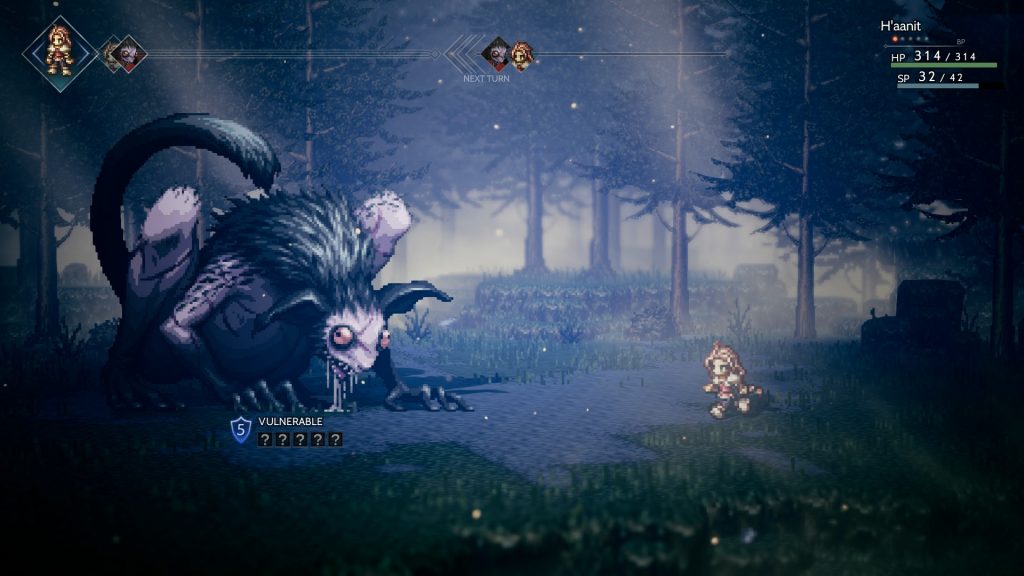
I am aware that each of the jobs are associated with one of the gods of the world but maybe there are different gods in different parts of the world, that grant different abilities. As long as we’re going out to find different classes, I would also like for SquareEnix to keep them weird, too. While there are some of the traditional JRPG classes in Octopath (Soldier, Thief, Priest), there are some that come with a different flavor (such as Apothecary, Scholar, and Merchant). I absolutely love this, and would love it if more of the characters in the sequels had non-traditional RPG classes. Why not sailor, or woodsman, or something? We have an apothecary, why not an alchemist? I’m good for pretty much anything, as long as it keeps me on my toes.
And even tweaking some of the existing jobs would not necessarily be unwelcome. The one that really jumps out at me is H’aanit. Being the hunter, her special ability for her primary class allows her to capture monsters and use them as attacks for a limited number of times. She comes with one permanent monster (her snow leopard, Linde). But the limited uses that her monsters have, along with the fact that Linde doesn’t really scale up as H’aanit does, also means that this ability is limited in use, and highly situational. With some slight tweaks, H’aanit would probably be my favorite party member to use, and I definitely wouldn’t mind giving the hunter another shot.
Difficulty Settings
A charge that is not infrequently leveled at JRPGs is that they are all “press A to win” after a certain point. As an experienced (if not competent) RPG gamer, I will say that this isn’t entirely accurate, but there is a grain of truth to it. You get into combat, and once you have the right build you just hammer down on the “do the thing” button until something dies.
You can’t really say that about Octopath Traveler as much, especially as the game progresses. A good portion of the combat involves exploiting specific elemental and weapon weaknesses that enemies have, in order to put them in a vulnerable state. In boss fights, you also have to worry about them changing up weaknesses, or preparing extra-powerful attacks. This means you not only have to focus on breaking their defences but also on when you break them. As a result of this, even random combat encounters can become intense quickly, and you can never really just smash the attack button blindly until you are victorious. Every combat encounter requires you to pay attention to what you’re doing, and remain engaged with the battle.
That being said, some of those battles (especially the bosses) can get brutal as the game goes on. A couple of friends of mine who got the game on my recommendation were definitely a little turned off by how much the difficulty ramps up. While they loved the game in general, they felt that the difficulty was a little much.
I’d stop short of saying “make the games easier.” While I definitely found the game challenging, I will be the first to admit that I’m not actually good at video games. I know plenty of hardcore JRPG players who found the difficulty in Octopath to be a refreshing change of pace in a turn-based RPG. I have no idea how they would implement this, but I would say that maybe a dynamic difficulty scale wouldn’t be a bad option for the game, in order to make it slightly more accessible.
Keep the Graphics and the Composer
Of course, amidst all this discussion about what to change in the game, it’s very easy to forget that there are several amazing things in the first game that don’t need all that much tweaking. For one thing, while it would be tempting to change up the graphical style, I really would prefer they didn’t. The mixture of sprites and 3D backgrounds works amazingly. When I first played this game I was struck by how gorgeous I found it to be, and I’m not the only one who thought so. Even my parents, who are very much not gamers, were struck by how pretty this game is to look at. I feel that any major revamp of graphical style would be taking away from the experience.
Likewise, keeping Yasunori Nishiki as the composer of the soundtrack would also be a great decision. The soundtrack for Octopath Traveler is a great one, striking all sorts of moods and emotional chords with the player. To put it simply, it’s not just a great video game soundtrack, it is quite possibly my favorite video game soundtrack of all time. And that is up against some stiff competition, as there is a lot of fantastic video game music out there. And I definitely want more of it in a sequel.
While the game may not be ready for quite some time, and while I may not have any plans to pick up the mobile prequel, the sequel to Octopath Traveler is something I eagerly await. It is definitely on my list of most awaited games. In the meantime, I wouldn’t mind walking those eight paths again, to prepare myself for whatever is coming.
Octopath Traveler is available on multiple platforms, including the Nintendo Switch, Steam, and Stadia.


